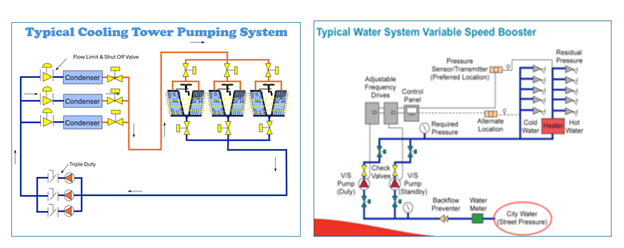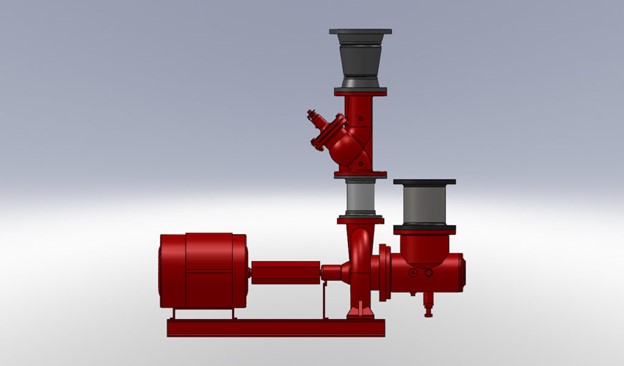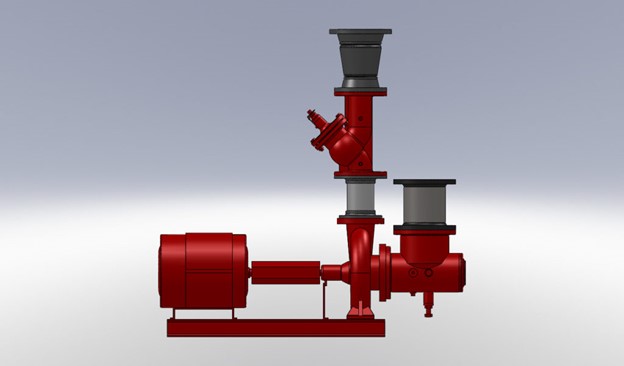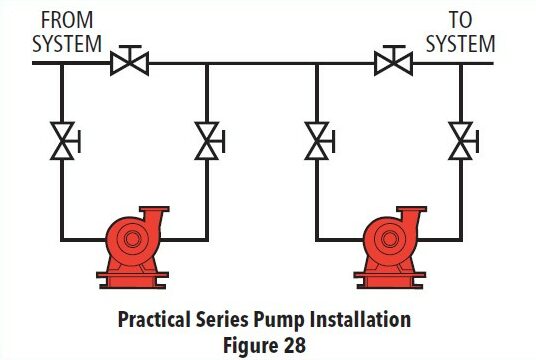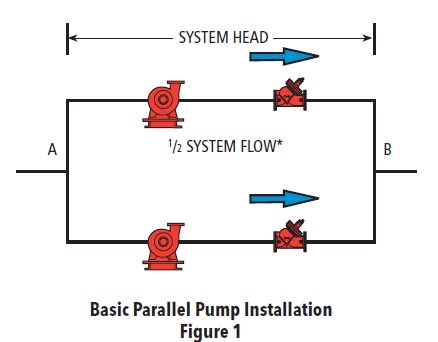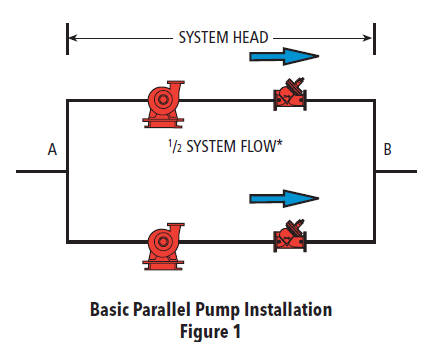System curves give insight into energy analysis, pump operation, and control setting analysis. Unlike closed hydronic systems, open systems rarely have a system curve that …
Hydronic Centrifugal Pumps – Open & Closed System Discharge Piping
The pump discharge is the most turbulent location in a hydronic system. There are simple rules to follow when piping up a pump discharge. Today, …
Hydronic Centrifugal Pumps – Closed System Suction Piping
The piping at the suction side of the pump is the most important and, for some engineers and designers, the most misunderstood part of hydronic …
Centrifugal Pumps – Series Pumping
Series pumping systems are used less in hydronic and plumbing systems than parallel pumping. That said, there are series pumping systems out in mechanical rooms. …
Centrifugal Pumps – When and How to Use Parallel Pumping
Parallel pumping is a preferred method of design for many hydronic and plumbing system applications. Today we describe five examples when you may want to …
Centrifugal Pumps – Parallel Pumping
There are many advantages to operating two identical pumps at the same time. This method of pumping is called either parallel or series pumping. Today …
Smart Variable Speed Centrifugal Pumps: Part 2 (Base Mounted)
Larger centrifugal pumps with horsepower over five are a great place to save energy in HVAC and plumbing systems. Historically, these larger pumps were typically …
Smart Variable Speed Centrifugal Pumps: Part 1 (Line Mounted)
This week and next we will talk about centrifugal pumps with the variable speed technology built into them. These pumps are called “Smart pumps.” Why …
B&G Systemwize: Overspeeding of Variable Speed Pumps
The term “overspeeding” in pump selection and operation is a topic of conversation in the world of hydronic design. When asked about this subject I …

